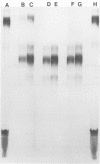Abstract
The carcinogenic nitrosamine, N-nitrosodiethanolamine (NDElA), was degraded in samples of sewage and two lake waters, and microorganisms were responsible for the transformation. However, the rate of NDElA disappearance was slow. In the samples of lake water, the rate and extent of NDElA metabolism varied with the time of year, and no disappearance occurred in samples taken in winter. The products formed from NDEIA were persistent in lake water. In sewage, no seasonal effect on the microbial conversion was evident, and the products of metabolism were slowly mineralized. NDElA is apparently converted to the same organic products in samples of all three environments. Although the products were not identified, the data suggest that they were modified dimers of NDElA.
Full text
PDF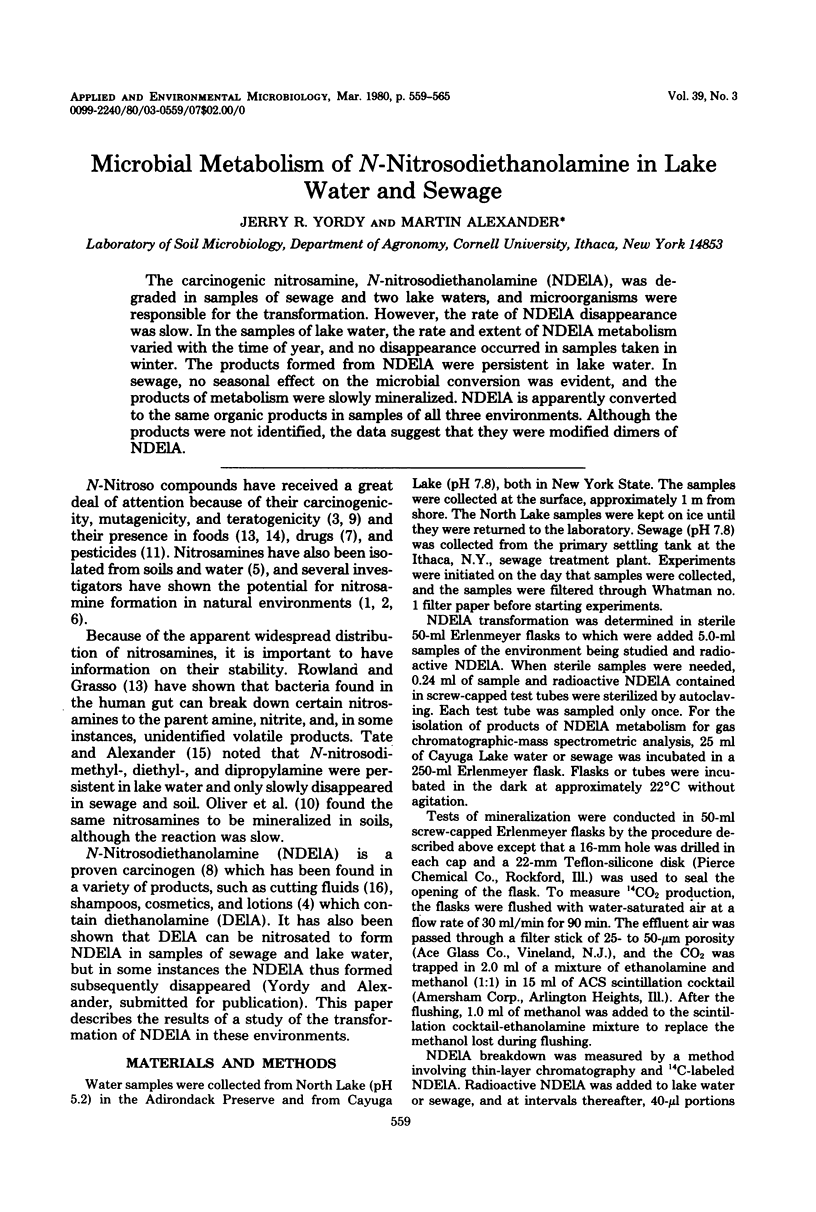
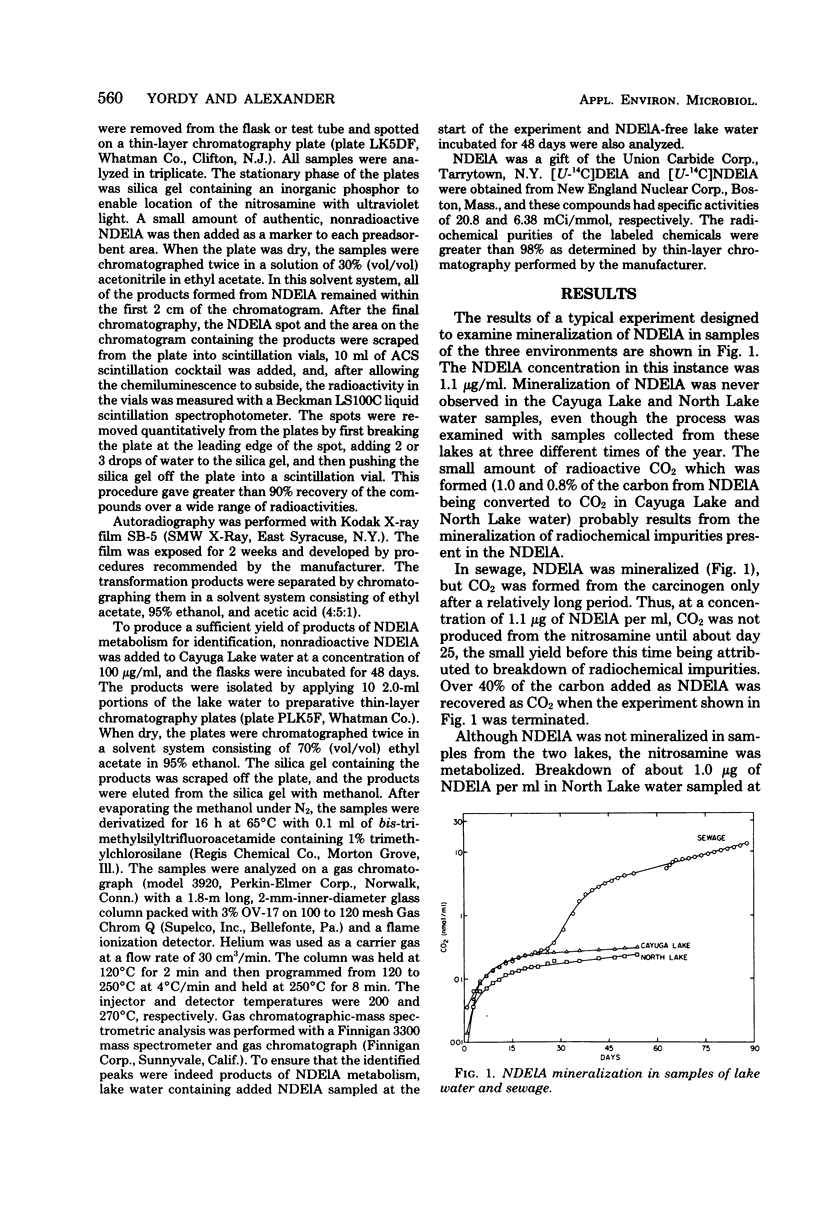
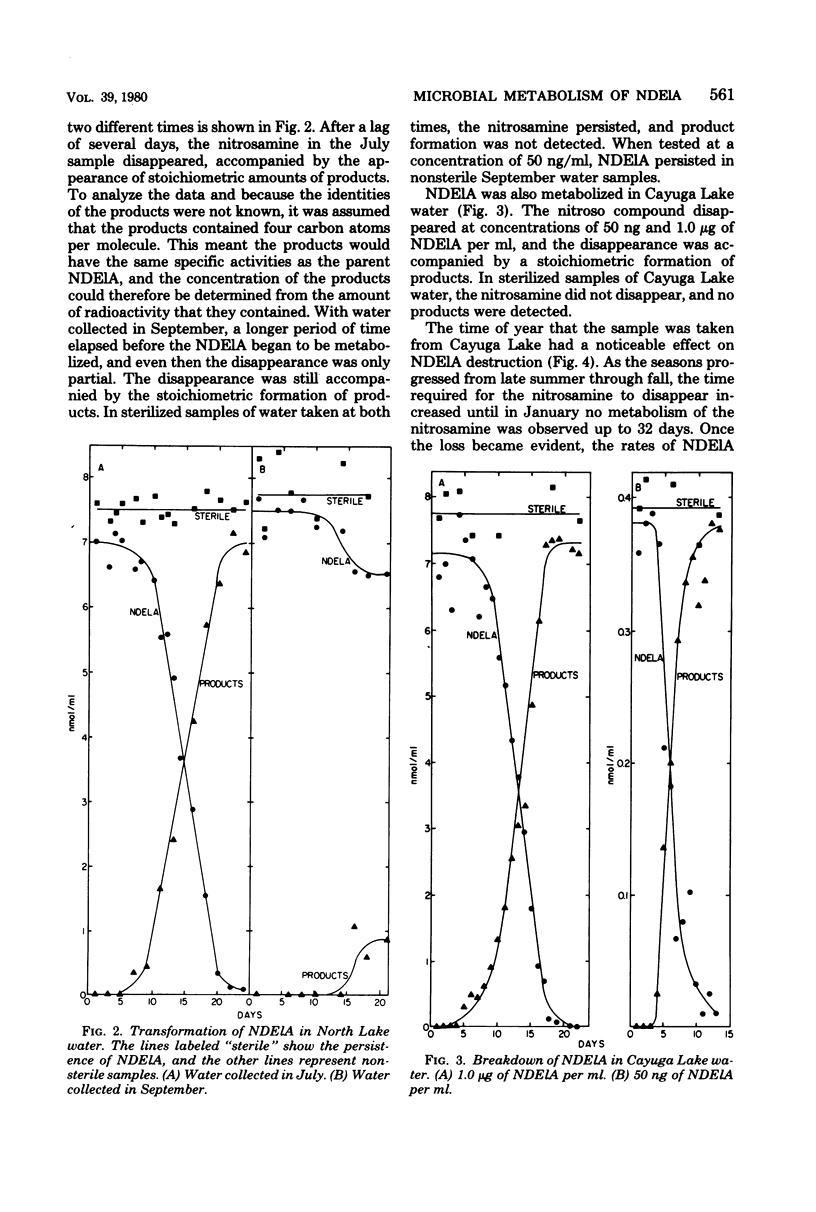
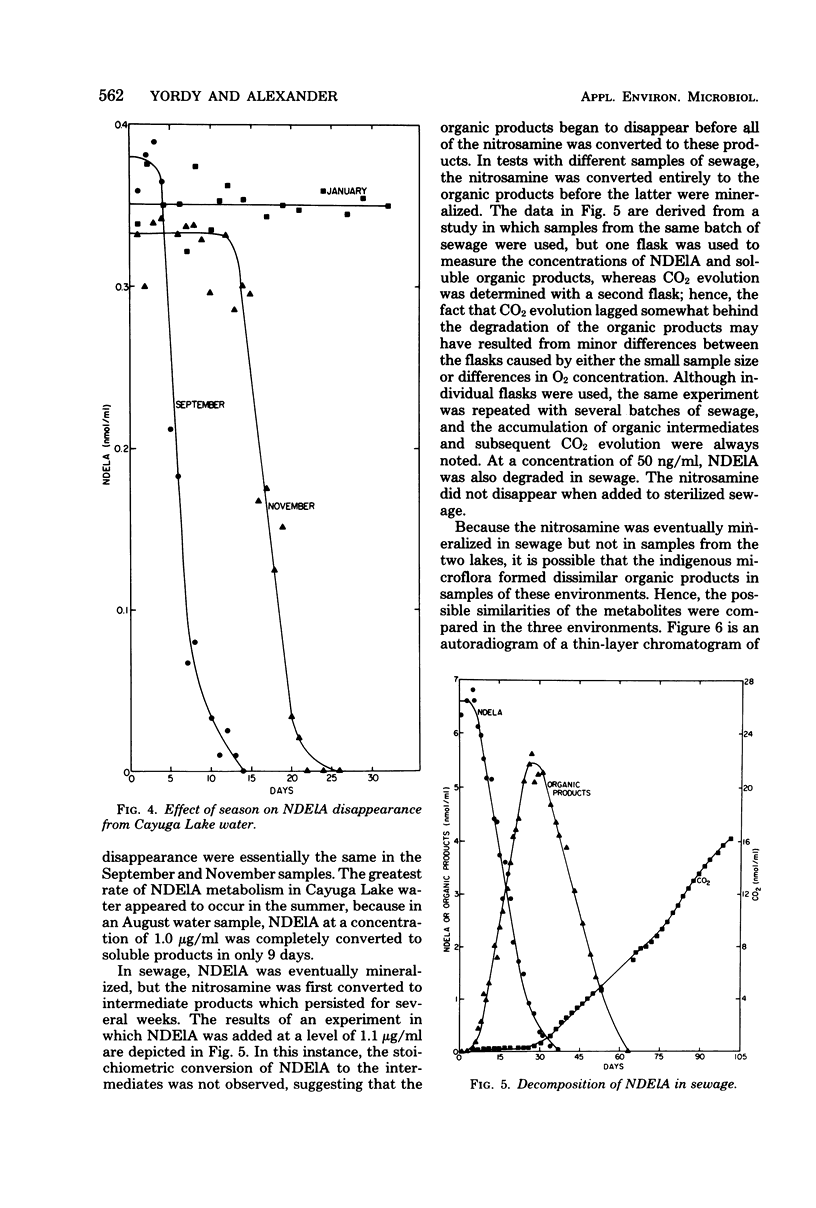
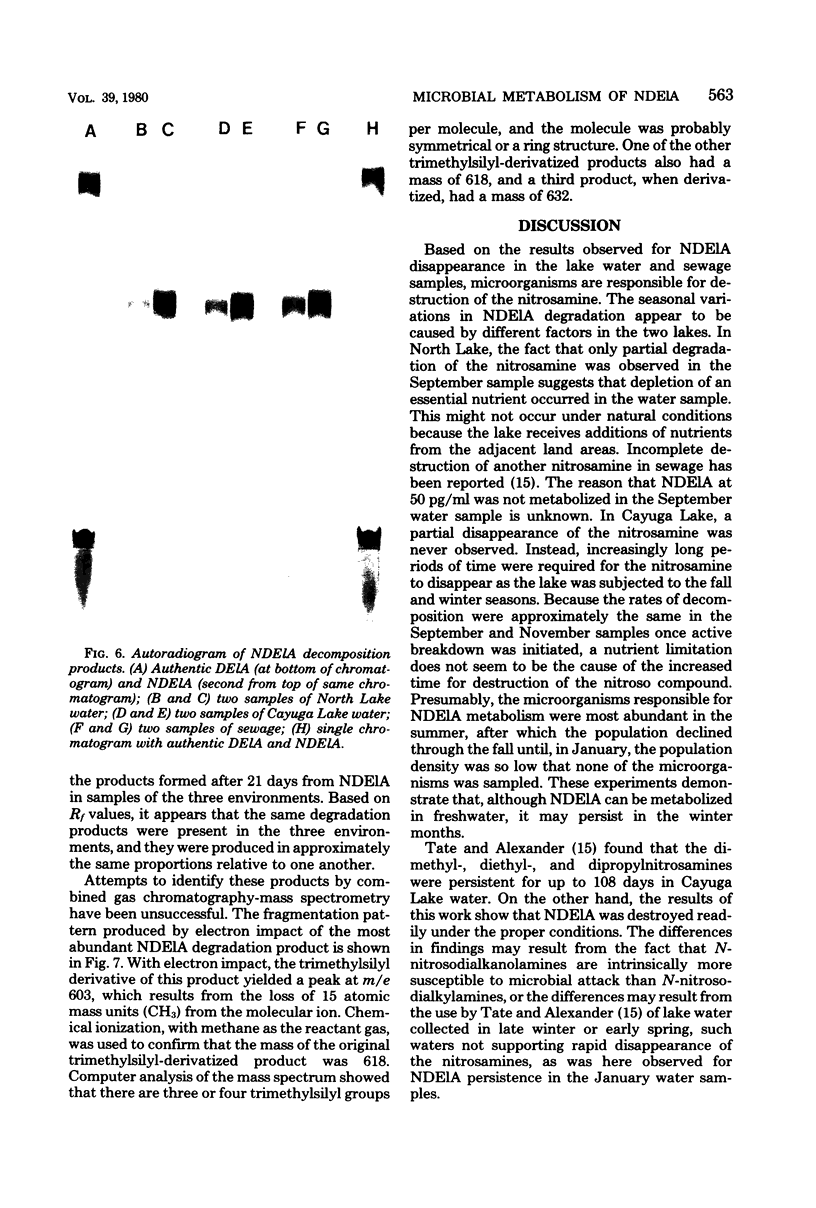
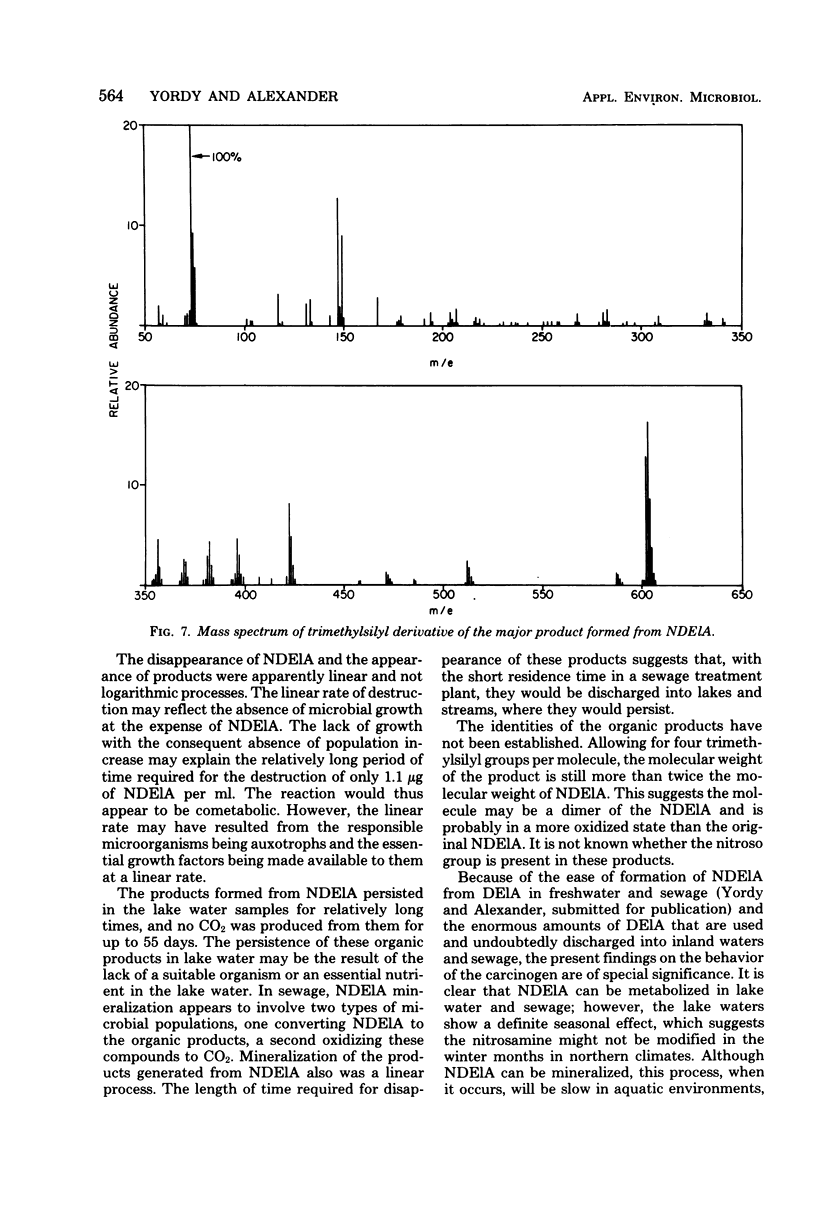
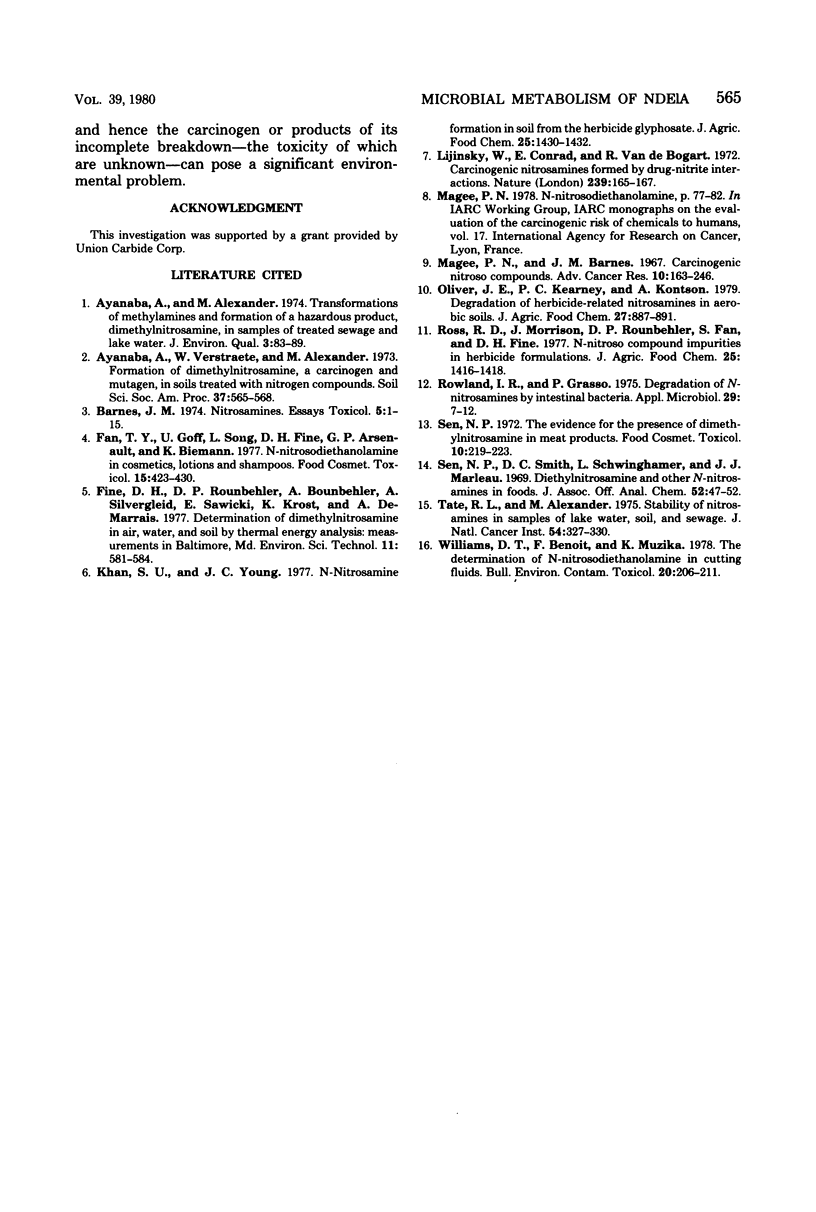
Images in this article
Selected References
These references are in PubMed. This may not be the complete list of references from this article.
- Fan T. Y., Goff U., Song L., Fine D. H., Arsenault G. P., Biemann K. N-Nitrosodiethanolamine in cosmetics, lotions and shampoos. Food Cosmet Toxicol. 1977 Oct;15(5):423–430. doi: 10.1016/s0015-6264(77)80007-2. [DOI] [PubMed] [Google Scholar]
- Khan S. U., Young J. C. N-nitrosamine formation in soil from the herbicide glyphosate. J Agric Food Chem. 1977 Nov-Dec;25(6):1430–1432. doi: 10.1021/jf60214a016. [DOI] [PubMed] [Google Scholar]
- Lijinsky W., Conrad E., Van de Bogart R. Carcinogenic nitrosamines formed by drug-nitrite interactions. Nature. 1972 Sep 15;239(5368):165–167. doi: 10.1038/239165b0. [DOI] [PubMed] [Google Scholar]
- Magee P. N., Barnes J. M. Carcinogenic nitroso compounds. Adv Cancer Res. 1967;10:163–246. doi: 10.1016/s0065-230x(08)60079-2. [DOI] [PubMed] [Google Scholar]
- Ross R. D., Morrison J., Rounbehler D. P., Fan S., Fine D. H. N-nitroso-compound impurities in herbicide formulations. J Agric Food Chem. 1977 Nov-Dec;25(6):1416–1418. doi: 10.1021/jf60214a013. [DOI] [PubMed] [Google Scholar]
- Rowland I. R., Grasso P. Degradation of N-nitrosamines by intestinal bacteria. Appl Microbiol. 1975 Jan;29(1):7–12. doi: 10.1128/am.29.1.7-12.1975. [DOI] [PMC free article] [PubMed] [Google Scholar]
- Sen N. P. The evidence for the presence of dimethylnitrosamine in meat products. Food Cosmet Toxicol. 1972 Apr;10(2):219–223. doi: 10.1016/s0015-6264(72)80199-8. [DOI] [PubMed] [Google Scholar]
- Tate R. L., 3rd, Alexander M. Stability of nitrosamines in samples of lake water, soil, and sewage. J Natl Cancer Inst. 1975 Feb;54(2):327–330. [PubMed] [Google Scholar]
- Williams D. T., Benoit F., Muzika K. The determination of N-nitrosodiethanolamine in cutting fluids. Bull Environ Contam Toxicol. 1978 Aug;20(2):206–211. doi: 10.1007/BF01683510. [DOI] [PubMed] [Google Scholar]



